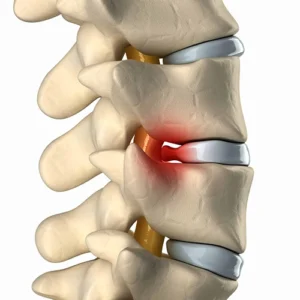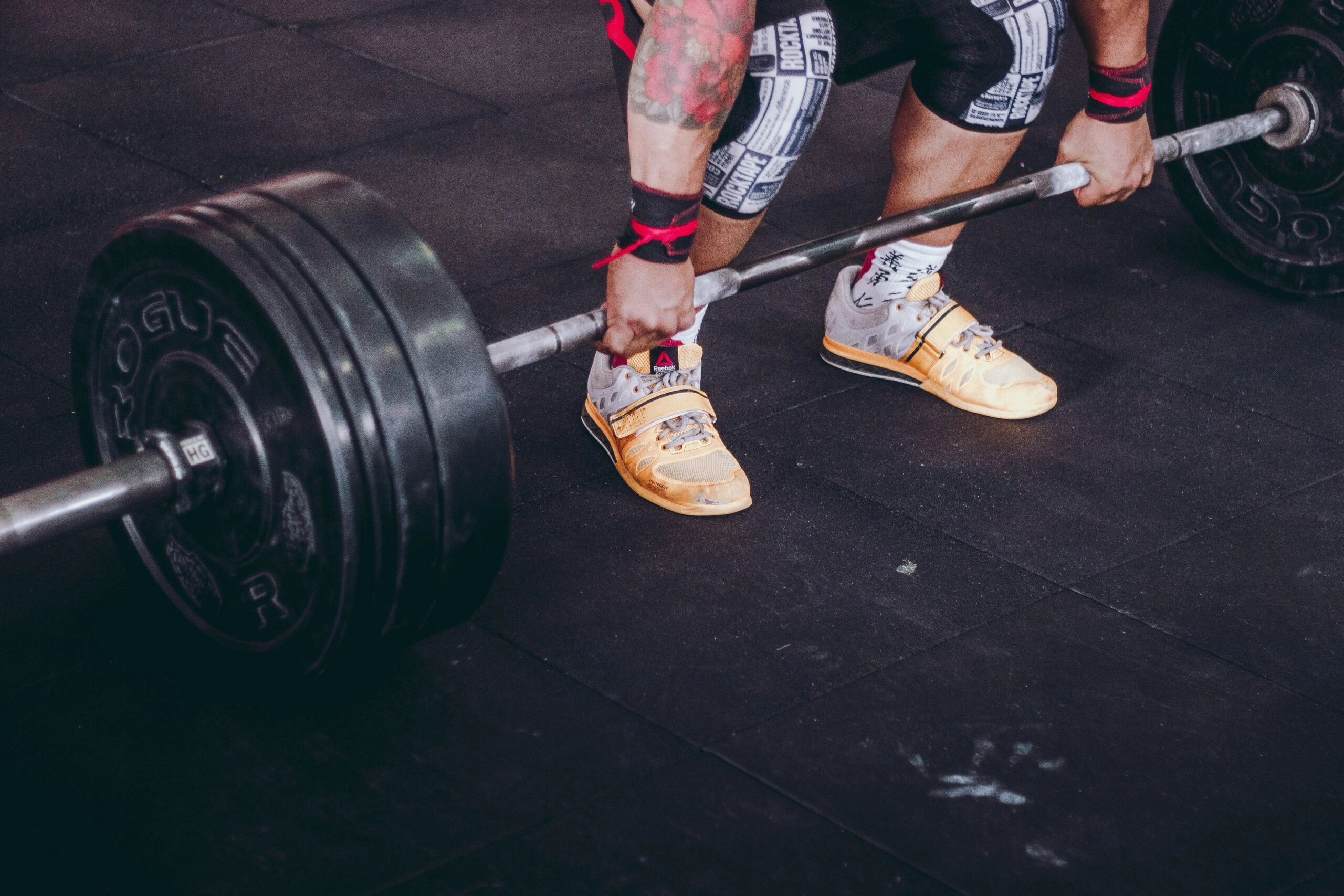If you are suffering from a bulging or herniated disc in the L5-S1 spinal level, there are specific exercises you should avoid. Below is a short list of such exercises according to your Anchorage-based chiropractor.
Generally, you want to avoid exercises that bend your L5-S1 joint forward or twist it out of alignment. The following exercises are not helpful and should be avoided: deadlifts, contact sports, sit-ups, hamstring stretches, twisting exercises, golf, running, and any exercise that causes pain.
If you are diagnosed with a bulging disc or a herniated disc at the L5-S1 level of your spine, your chiropractor will most likely prescribe you a series of exercises and other noninvasive, conservative treatments. You should do those exercises as long as your chiropractor asks you to do so.
You should confer with your chiropractor if you are a fitness buff or want to do other exercises. Above all, though, avoid the following exercises and activities:
1. Avoid Doing Deadlifts
If you are a weightlifter, there may be certain lifts you can safely perform, even with a herniated disc. However, you should discuss the matter with your chiropractor first. He might recommend using fewer weights or an altogether different weightlifting exercise. He can also provide tips on recovering from low back pain after a deadlift.
Regardless, deadlifts, where you lift heavy weights straight up from the ground using your posterior chain (the string of muscles running up and down your back from your shoulders to your heels), should be avoided.
2. Avoid Playing Contact Sports
This may seem like a no-brainer, but to be complete, it must be said. Sports like rugby, football, and hockey involve a lot of physical contact, sudden twisting movements, running (or skating), and other types of movement that will be painful and interfere with your healing process. If you play such sports regularly, the best thing to do is to take time off until your chiropractor deems you ready to return. Don’t worry; you don’t need a referral to see a chiropractor.
3. Avoid Doing Sit-Ups
Generally speaking, you want to avoid exercises that cause you to strain the L5-S1 region. A typical sit-up, although an excellent core-strengthening exercise, will cause your lower back to bow outward. This will likely put pressure on your L5-S1 disc and, in the end, will probably worsen the problem.
4. Avoid Doing Hamstring Stretches
Runners and other athletes commonly use the hamstring stretch. Generally, the hamstring stretch isn’t particularly good for your back. Like the sit-up, the hamstring stretch causes your back to bow outward. Also, like the sit-up, this can worsen a herniated disc. Do not do hamstring stretches with an L5-S1 issue.
5. Avoid Doing Twisting Exercises
Various exercises across multiple disciplines involve twisting and bending at the waist. You should avoid all these exercises when you have a bulging or herniated disc at the L5-S1 level of your spine. In all likelihood, such exercises will hurt, not help you heal properly.
6. Avoid Playing Golf
You can see it, can’t you? The golfer’s swing. That’s where the problem lies in this sport. The twisting required to swing a golf club will, at best, probably cause significant pain if you have an L5-S1 disc bulge or herniation. At worst, it can make the problem worse.
Avoid golfing so you can heal properly, and only return when your sports chiropractor says it’s okay.
7. Avoid Running
Running is a little trickier. Sometimes, if it is only a minor injury, you might be able to continue running – but talk to your local Anchorage, AK chiropractor to be sure.
Often, the constant up-and-down motion that occurs while you run can be very jarring and painful if you have an L5-S1 disc issue. Some sports, like basketball and soccer, involve much running and sudden stops, twists, and turns. That is terrible news for a severe disc problem and should be avoided.
8. Avoid Any Exercise That Causes You Pain
This is a general rule of thumb used in chiropractic care – both here in Anchorage, AK, and everywhere else. Your body knows what it likes and what it doesn’t like. If you are feeling pain, you are pushing your body to a point it doesn’t want to be. Avoid exercises that cause you pain, and you should heal more quickly.
Now that you know what to avoid, discover tips to heal a herniated disc quickly.

An Anchorage Chiropractor Explains: Bulging and Herniated Discs: What Are They?
The human spine consists of a series of bone joints called vertebrae stacked one on top of the other to form a flexible, somewhat S-shaped column. Between every two vertebrae, there is a small cushion of flexible material called a disc.
Sometimes, a disc can bulge out between vertebrae or even rupture so that material from the disc comes in contact with a spinal nerve. A ruptured disc is called a herniated disc. The L5-S1 vertebra at the very base of the spine is one of the most common locations for such.
Symptoms for a disc issue at the L5-S1 location include:
- Pain with specific movements (walking, stretching, etc…)
- Numbness
- Muscle weakness
- Pain radiating down one or the other leg (or both)
- Pain radiating down the sciatic nerve (sciatica)
If you suffer from symptoms like these, you may have an issue with your L5-S1 spinal level. You should visit a medical professional such as a chiropractor or general practitioner. Seeing a chiropractor for a herniated disc is a logical and highly recommended choice.
Can It Get Worse?
A herniated disc, whether at the L5-S1 level or anywhere else on the spine, can get worse. What makes a herniated disc worse? Well, several things can make a herniated disc worse. To start, incorrect movements or activities – like doing the wrong exercises – can increase pressure on the disc.
Not only will this cause pain, but it can also cause the disc to herniate further. If it is in the process of healing, it can be injured all over again. Also, the disc might extrude more gelatin-like center material into the area around the vertebrae. The gelatin-like material becomes more likely to contact a nearby spinal nerve. This leads to increased pain, possible numbness, and other symptoms.
Ultimately, your l5-s1 disc bulge recovery time will depend on following your chiropractor’s directions. This is true regardless of where the disc issue is located. Maintain open communication with your chiropractor, and he/she can see you in a healthier place.
Chiropractic Recommended Treatment Options for L5-S1 Disc Problem in Anchorage, AK
Before we get to the exercises you should avoid, let’s discuss some of the science involved with L5-S1 disc issues. The first thing to understand is that L5-S1 issues are most prominent in athletic individuals rather than the aged, as you might suspect.
One study by the British Journal of Sports Medicine found more significant lumbar disc degeneration among elite athletes than the average population. Another National Library of Medicine study found that Lumbar Disc Herniation tends to decrease amongst the elderly, particularly females above 80.
You may wonder whether or not you should see a chiropractor for treatment. If that is the case, consider these two studies.
The first is a case study by Europe PMC. It found that a 38-year-old female with L5-S1 disc herniation (as well as L4-L5) who was treated with a variety of noninvasive conservative treatments, including Chiropractic distraction manipulation, found significant relief from both low back pain and sciatica.
Another study in the Journal of Chiropractic Medicine involved a 28-year-old woman who had previously been treated for a herniated disc in the L5-S1 level of the spine by surgery. Still suffering from pain and other symptoms, she opted to try chiropractic treatment. The chiropractor in question used various chiropractic techniques, resulting in a reduction in the lower back and radicular leg pain, a decrease in her use of opioid medicine (for pain relief), and improved limb function.
So, rest assured, if you have an L5-S1 disc problem, visiting your local chiropractor is a logical choice.
Conclusion
Several things should be apparent from the above. If you have an L5-S1 disc bulge or herniation, seeing a highly recommended chiropractor, here in Anchorage, can help. Visit Better Health Alaska Chiropractors to receive highly recommended treatments for herniated or bulging discs. That help will likely include a series of recommended exercises. There are a lot of exercise options to choose from. Nevertheless, there are specific exercises that you should avoid if you want to heal properly.
Sources:










